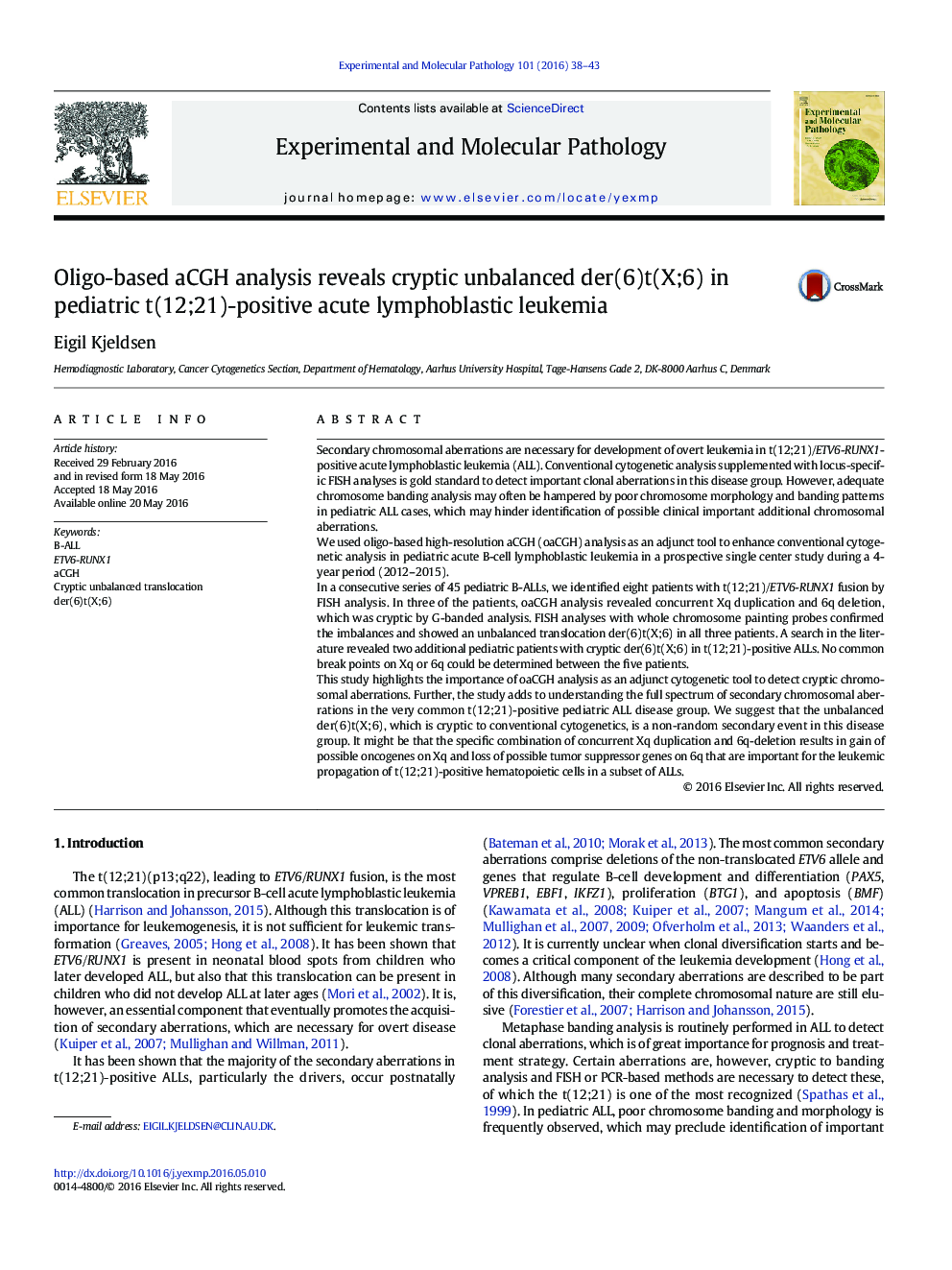| کد مقاله | کد نشریه | سال انتشار | مقاله انگلیسی | نسخه تمام متن |
|---|---|---|---|---|
| 2774829 | 1152296 | 2016 | 6 صفحه PDF | دانلود رایگان |
• Cryptic unbalanced der(6)t(X;6) is reported in pediatric t(12;21)-positive ALLs.
• It is non-random; has so far only been detected in pediatric t(12;21)-positive ALL.
• Concurrent Xq duplication and 6q deletion by aCGH analysis indicates its presence.
• aCGH is a valuable adjunct cytogenetic tool to uncover cryptic genomic aberrations.
• It adds to the spectrum of secondary genomic aberrations in t(12;21)-positive ALLs.
Secondary chromosomal aberrations are necessary for development of overt leukemia in t(12;21)/ETV6-RUNX1-positive acute lymphoblastic leukemia (ALL). Conventional cytogenetic analysis supplemented with locus-specific FISH analyses is gold standard to detect important clonal aberrations in this disease group. However, adequate chromosome banding analysis may often be hampered by poor chromosome morphology and banding patterns in pediatric ALL cases, which may hinder identification of possible clinical important additional chromosomal aberrations.We used oligo-based high-resolution aCGH (oaCGH) analysis as an adjunct tool to enhance conventional cytogenetic analysis in pediatric acute B-cell lymphoblastic leukemia in a prospective single center study during a 4-year period (2012–2015).In a consecutive series of 45 pediatric B-ALLs, we identified eight patients with t(12;21)/ETV6-RUNX1 fusion by FISH analysis. In three of the patients, oaCGH analysis revealed concurrent Xq duplication and 6q deletion, which was cryptic by G-banded analysis. FISH analyses with whole chromosome painting probes confirmed the imbalances and showed an unbalanced translocation der(6)t(X;6) in all three patients. A search in the literature revealed two additional pediatric patients with cryptic der(6)t(X;6) in t(12;21)-positive ALLs. No common break points on Xq or 6q could be determined between the five patients.This study highlights the importance of oaCGH analysis as an adjunct cytogenetic tool to detect cryptic chromosomal aberrations. Further, the study adds to understanding the full spectrum of secondary chromosomal aberrations in the very common t(12;21)-positive pediatric ALL disease group. We suggest that the unbalanced der(6)t(X;6), which is cryptic to conventional cytogenetics, is a non-random secondary event in this disease group. It might be that the specific combination of concurrent Xq duplication and 6q-deletion results in gain of possible oncogenes on Xq and loss of possible tumor suppressor genes on 6q that are important for the leukemic propagation of t(12;21)-positive hematopoietic cells in a subset of ALLs.
Journal: Experimental and Molecular Pathology - Volume 101, Issue 1, August 2016, Pages 38–43
